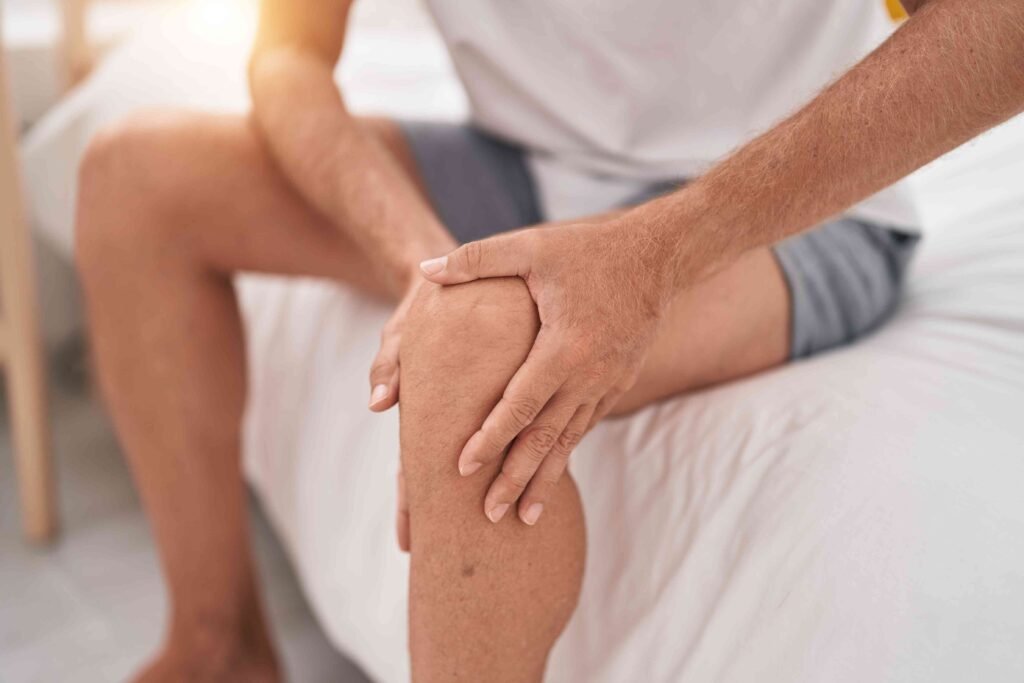Osteoporosis: Prevention and Treatment Options
Osteoporosis is often referred to as the “silent disease” because it quietly weakens bones, making them fragile and prone to fractures without showing obvious symptoms. Affecting millions of people worldwide, particularly postmenopausal women and the elderly, osteoporosis can significantly impact quality of life. But the good news is that with the right approach, it’s possible to prevent osteoporosis and manage it effectively.
What is Osteoporosis?
Before we dive into prevention and treatment, let’s understand what osteoporosis really is. In simple terms, osteoporosis is a condition where the bones become weak and brittle. Our bones are living tissues that constantly break down and rebuild. When we’re young, bone mass increases as the body produces more new bone than it breaks down. However, as we age, this balance shifts—bone is lost faster than it’s formed. When the bones lose too much mass, they become porous and are more likely to fracture, especially in areas like the hips, spine, and wrists. Osteoporosis can progress silently for years, without any obvious symptoms until a fracture occurs. That’s why it’s important to be proactive when it comes to bone health.
Understanding the Risk Factors
Age and Gender
As we get older, our risk of developing osteoporosis increases. Women are particularly at risk after menopause due to the drop in estrogen, a hormone that protects bones. In fact, women are about four times more likely than men to develop osteoporosis.

Family History
Genetics play a significant role in bone health. If your parents or grandparents had osteoporosis, you may be at higher risk of developing it as well.
Lifestyle Choices
Lifestyle factors such as a lack of physical activity, smoking, excessive alcohol consumption, and poor nutrition (especially a diet low in calcium and vitamin D) can all increase your risk of osteoporosis.
Medical Conditions and Medications
Certain medical conditions like rheumatoid arthritis, thyroid disorders, and kidney disease can also contribute to bone loss. Long-term use of medications like steroids can further elevate your risk.
Now that we’ve identified the risk factors, let’s explore Prevention methods and Treatment Options that can help you protect your bones.
Prevention: How to Keep Your Bones Strong
While some factors, such as age and family history, are beyond our control, there are several effective strategies to prevent osteoporosis and maintain strong bones throughout life.
1. Maintain a Calcium-Rich Diet
Calcium is one of the building blocks of strong bones, so it’s crucial to get enough of it throughout your life. For adults, the recommended daily intake is about 1,000 mg, and for women over 50 and men over 70, it increases to 1,200 mg. Some great calcium-rich foods include:
– Dairy products like milk, yogurt, and cheese
– Leafy green vegetables such as kale and broccoli
– Fortified foods like cereals and orange juice
– Almonds and tofu

2. Get Enough Vitamin D
Vitamin D helps your body absorb calcium and is just as important as calcium for bone health. You can get vitamin D through sunlight exposure, food, and supplements. Fatty fish (like salmon), egg yolks, and fortified dairy products are good dietary sources of vitamin D. For adults, the recommended daily intake is 600 IU, and for those over 70, it’s 800 IU. In regions with less sunlight, supplements may be necessary to meet these requirements.
3. Exercise Regularly
Physical activity, particularly weight-bearing and strength-training exercises, is a cornerstone of osteoporosis prevention. Exercises like walking, jogging, weightlifting, and yoga help strengthen bones and improve balance, reducing the risk of falls and fractures. Aim for at least 30 minutes of weight-bearing exercises on most days of the week to keep your bones strong.

4. Avoid Smoking and Limit Alcohol
Smoking has a detrimental effect on bone density, accelerating bone loss. Quitting smoking at any stage of life can improve bone health. Similarly, excessive alcohol consumption interferes with the body’s ability to absorb calcium, so it’s best to limit alcohol to moderate levels.

5. Prevent Falls
As bones weaken, the risk of fractures from falls increases. Taking steps to reduce the risk of falls—such as using proper lighting, wearing supportive shoes, and keeping your home clutter-free—can make a big difference in preventing fractures.
6. Regular Bone Density Testing
One of the most effective ways to catch osteoporosis early is by getting a bone density test, known as a DEXA scan. This test measures bone mineral density and helps doctors determine if you have osteoporosis or if you’re at risk. Women over the age of 65, men over 70, and younger individuals with risk factors should consider getting this test done. The earlier osteoporosis is detected, the sooner you can take action to protect your bones.
Treatment: Managing Osteoporosis
If you’ve been diagnosed with osteoporosis, don’t lose heart—there are several treatment options that can help manage the condition and reduce the risk of fractures.
1. Medications for Bone Strength
Several medications are available that can slow bone loss or even help rebuild bone. Common medications include:
– Bisphosphonates: These drugs, such as alendronate and risedronate, help slow the rate at which bone is broken down. They are often the first line of treatment for osteoporosis.
– Denosumab: This is an injectable medication that helps prevent bone loss by inhibiting the cells responsible for breaking down bone tissue.
– Hormone Replacement Therapy (HRT): For women, hormone therapy can be beneficial in preserving bone density, especially if started early after menopause. However, HRT may carry other risks, so it’s important to discuss this option thoroughly with your doctor.
– Teriparatide: This medication stimulates bone growth and is often used for individuals with severe osteoporosis or those who can’t tolerate other treatments.
2. Lifestyle Modifications
Even if you’re on medication, maintaining a healthy lifestyle is crucial for managing osteoporosis. A combination of a nutrient-rich diet, regular exercise, and fall prevention strategies can complement medical treatment and help improve your quality of life.
3. Physical Therapy
For those with advanced osteoporosis, physical therapy can be a vital part of treatment. Physical therapists can design exercise programs tailored to improve strength, balance, and flexibility, reducing the risk of falls and fractures.
4. Surgery for Osteoporotic Fractures
In cases where osteoporosis leads to fractures, especially in the spine or hip, surgical intervention may be necessary. Procedures like vertebroplasty or kyphoplasty can help stabilize spinal fractures, while hip replacement surgery may be required for severe hip fractures.

Living with Osteoporosis: Tips for Everyday Life
If you’re living with osteoporosis, managing your bone health becomes part of your daily routine. Here are some practical tips to help you live your life to the fullest while protecting your bones:
– Keep Moving: Even with osteoporosis, staying active is essential. Choose low-impact activities like swimming or walking to keep your muscles and bones strong without putting too much stress on your joints.
– Bone-Friendly Diet: Along with calcium and vitamin D, be sure to get plenty of magnesium, phosphorus, and protein in your diet. These nutrients play a role in maintaining bone health.
– Supportive Shoes: Wear shoes with good arch support and non-slip soles to reduce the risk of falls. Avoid high heels or shoes with poor grip.
Conclusion
Osteoporosis may be common, but it doesn’t have to define your future. With early detection, a proactive approach to prevention, and effective treatment options, it’s possible to maintain strong, healthy bones for a lifetime. Whether you’re focusing on a nutrient-rich diet, incorporating weight-bearing exercises into your routine, or managing osteoporosis with medication, every step you take can help protect your bones and improve your overall quality of life.


